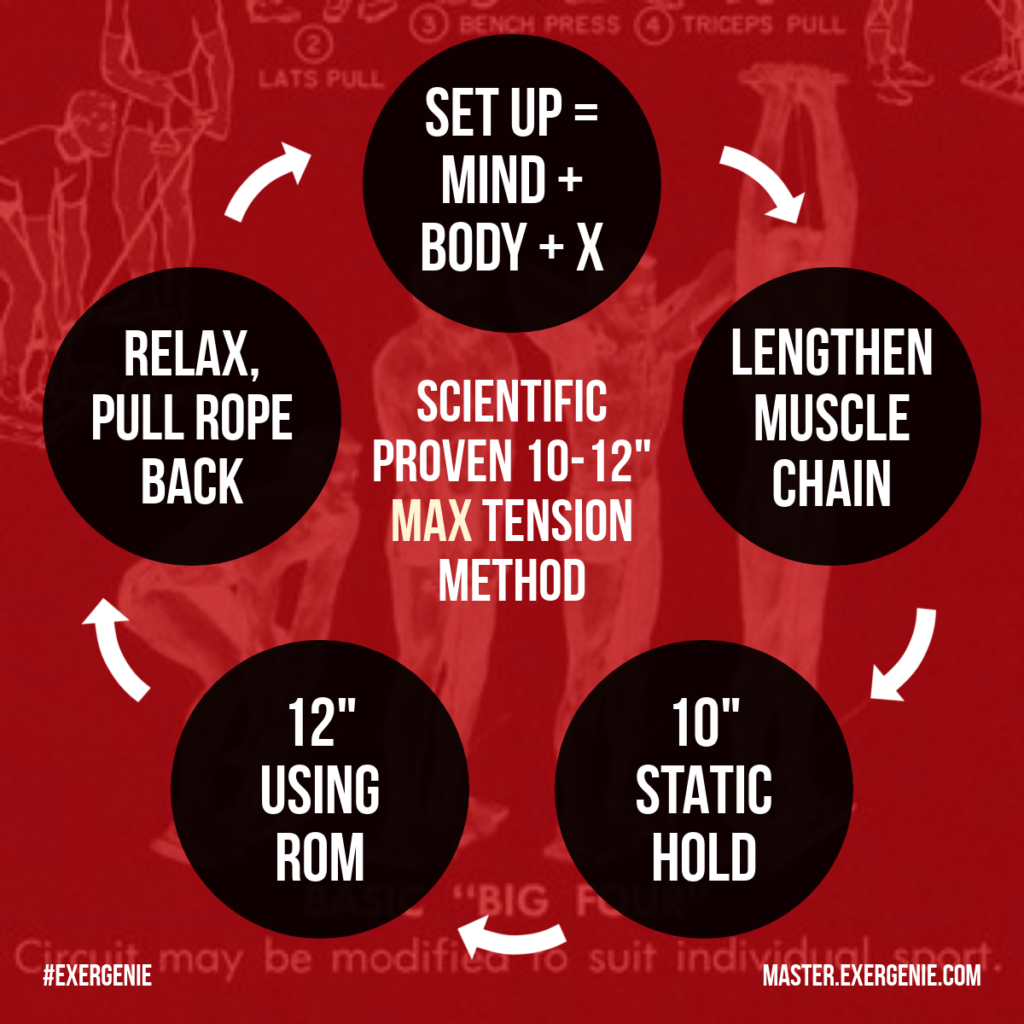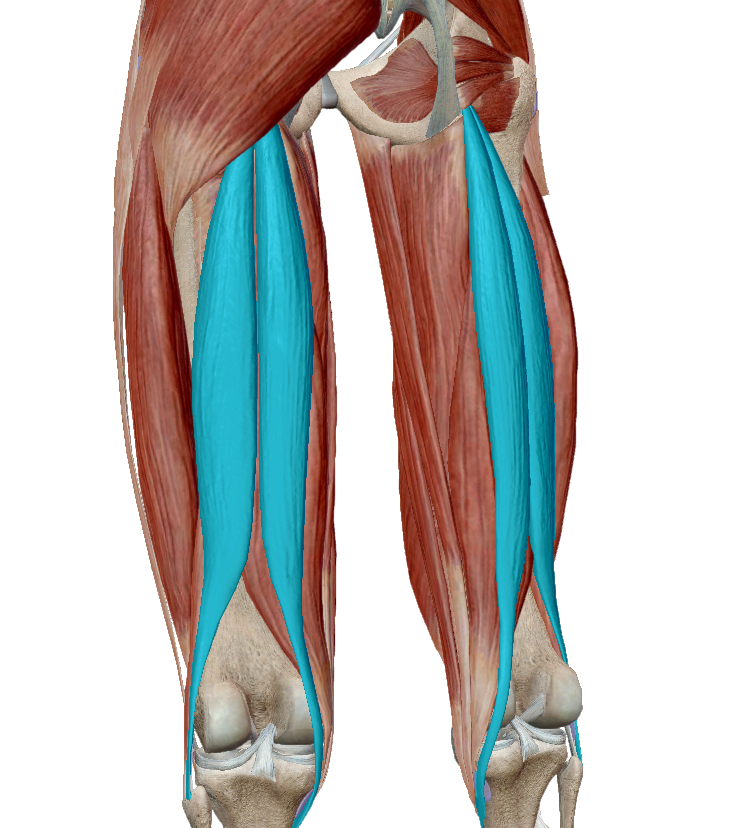Abstract
This article summarizes existing scientific research and methodologies on hamstring injury prevention and rehabilitation, focusing on the application of the 10/12 method paired with the Exer-Genie® system. The protocol combines isometric and isotonic exercises to improve hamstring strength, flexibility, and neuromuscular efficiency. Drawing from peer-reviewed studies and evidence-based practices, this summary highlights the biomechanical advantages of the 10/12 method and its effectiveness in reducing injury risks and aiding recovery.
Introduction
Hamstring injuries are among the most frequently reported in sports, often associated with sprinting, sudden directional changes, and inadequate muscle conditioning. These injuries can result in prolonged recovery periods and increased risk of recurrence. To address these challenges, structured resistance training methods, such as the 10/12 method, have been developed to enhance hamstring strength and flexibility. This paper consolidates scientific findings on the application of the 10/12 method using the Exer-Genie® system, emphasizing its role in injury prevention and rehabilitation.
The Exer-Genie® system, an adjustable resistance training device, provides a controlled environment for progressive overload, a key principle in injury prevention and rehabilitation. Its compact design and ability to offer variable resistance make it particularly effective for targeted muscle training.
Methods
The 10/12 method is a structured protocol designed to optimize hamstring function. It includes:
10-Second Isometric Contraction
- Engages the hamstring muscles at a moderate intensity (60-80% of maximum effort)
- Focuses on neuromuscular activation and stabilization
12-Second Controlled Movement
- Combines isometric and concentric muscle actions
- Emphasizes slow, controlled movement to enhance muscle lengthening under tension—a key factor in reducing injury risks

Progressive Resistance
- The Exer-Genie® system provides adjustable resistance through a friction-based mechanism
- Resistance can be tailored to individual needs, ensuring safe and effective training
Protocol Design
- Three repetitions per leg, performed three times per week
- Exercises are conducted in a pain-free range of motion to ensure safety during rehabilitation
Results
Existing studies and reviews of resistance training protocols highlight the following outcomes when the 10/12 method is applied:
Strength and Flexibility
- Eccentric training, as incorporated in the 12-second controlled movement, has been shown to improve muscle-tendon unit flexibility and reduce the risk of strain injuries (Opar et al., 2012)
- Isometric holds enhance muscle fiber recruitment and joint stability (Proske & Morgan, 2001)
Neuromuscular Adaptations
- Resistance training with progressive overload improves neuromuscular efficiency, enhancing coordination between agonist and antagonist muscle groups (Higashihara et al., 2015)
Injury Prevention
- Studies on eccentric hamstring exercises, such as the Nordic hamstring curl, demonstrate a significant reduction in injury rates (van der Horst et al., 2015). The 10/12 method incorporates similar principles with added control and adaptability
Rehabilitation Effectiveness
- Controlled resistance training aids in restoring strength and function post-injury, reducing the likelihood of re-injury (Heiderscheit et al., 2010).
Discussion
The 10/12 method, implemented with the Exer-Genie® system, aligns with contemporary evidence supporting the use of eccentric and isometric training for hamstring injury prevention and rehabilitation. The method’s focus on controlled movements and progressive resistance addresses key risk factors, including strength imbalances and inadequate flexibility.
The Exer-Genie® system’s unique design allows for precise control of resistance, enabling safe training across all fitness levels. Its portability and adaptability make it a practical tool for both clinical rehabilitation settings and athletic training environments.
This summary consolidates findings from studies on eccentric and isometric training, highlighting their role in enhancing hamstring function. Future research should explore long-term outcomes of the 10/12 method and its integration into broader training protocols.
Conclusion
The 10/12 method, when paired with the Exer-Genie® system, provides a scientifically supported approach to hamstring injury prevention and rehabilitation. By combining isometric activation with controlled resistance movements, this protocol effectively enhances strength, flexibility, and neuromuscular coordination. Its adaptability and evidence-based foundation make it a valuable tool for athletes, clinicians, and fitness enthusiasts.
References
- Heiderscheit, B. C., Sherry, M. A., Silder, A., Chumanov, E. S., & Thelen, D. G. (2010). Hamstring strain injuries: Recommendations for diagnosis, rehabilitation, and injury prevention. Journal of Orthopaedic & Sports Physical Therapy, 40(2), 67-81.
- Higashihara, A., Ono, T., Kubota, J., Okuwaki, T., & Fukubayashi, T. (2015). Functional differences in the activity of the hamstring muscles with increasing running speed. Journal of Sports Sciences, 33(6), 609-617.
- Opar, D. A., Williams, M. D., & Shield, A. J. (2012). Hamstring strain injuries: Factors that lead to injury and re-injury. Sports Medicine, 42(3), 209-226.
- Proske, U., & Morgan, D. L. (2001). Muscle damage from eccentric exercise: Mechanism, mechanical signs, adaptation, and clinical applications. The Journal of Physiology, 537(2), 333-345.
- van der Horst, N., Smits, D. W., Petersen, J., Goedhart, E. A., & Backx, F. J. (2015). The preventive effect of the Nordic hamstring exercise on hamstring injuries in amateur soccer players: A randomized controlled trial. The American Journal of Sports Medicine, 43(6), 1316-1323.
